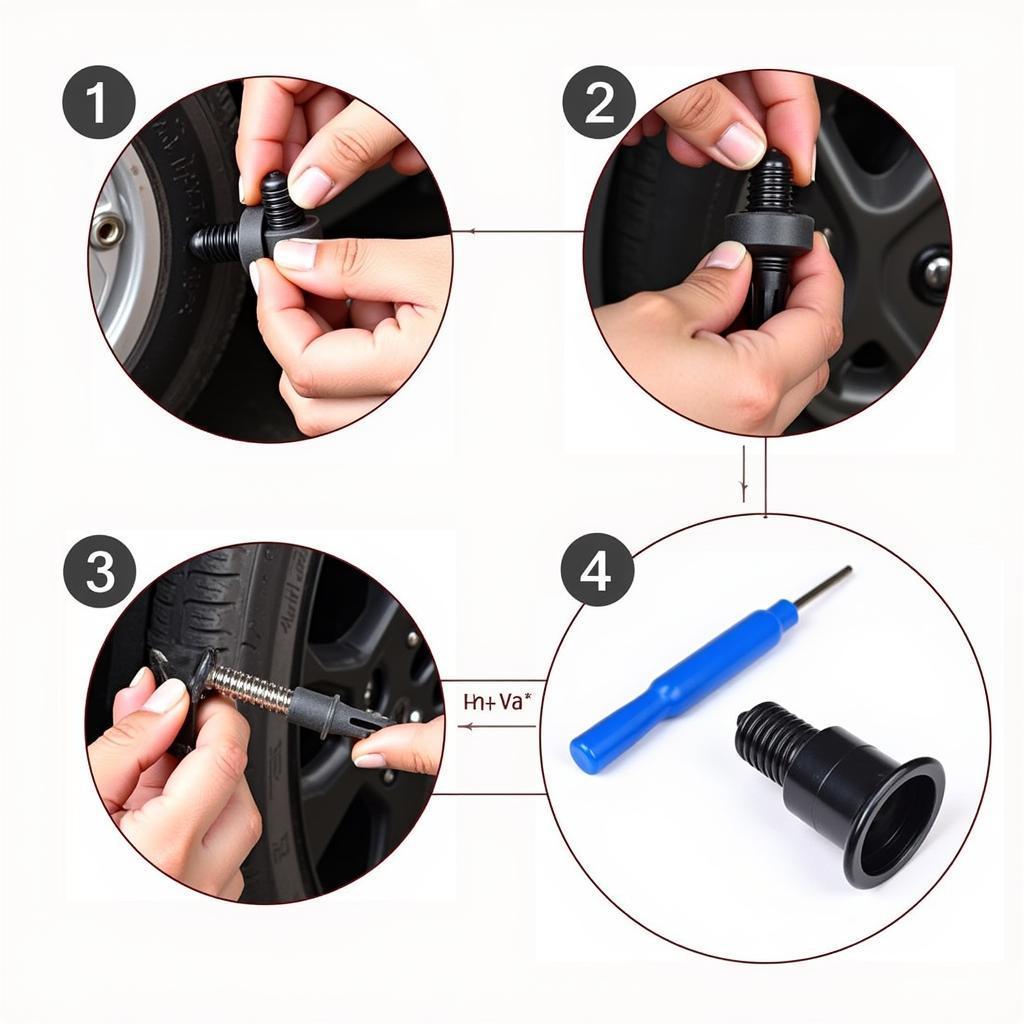The dreaded brake light warning on your 2010 Nissan Maxima dashboard can be a frustrating sight. It usually pops up unexpectedly, leaving you wondering about the cause and potential solutions. This comprehensive guide will delve into the common reasons behind this warning light, how to diagnose the problem, and the steps you can take to resolve it.
Common Causes of a 2010 Nissan Maxima Brake Light Warning
Several factors can trigger the brake light warning on your Maxima. Let’s explore some of the most common culprits:
1. Burnt Out Brake Light Bulbs
This is the most frequent reason for the brake light warning. Brake light bulbs, like any other bulb, have a limited lifespan and eventually burn out.
How to identify: Inspect all your brake lights (left, right, and center high mount stop lamp) for any bulbs that are not illuminating.
2. Blown Fuses
Fuses protect your car’s electrical circuits from overloads. A blown fuse in the brake light circuit can cause the warning light to illuminate.
How to identify: Check your Maxima’s fuse box (refer to your owner’s manual for its location) and inspect the brake light fuse for any signs of damage or a broken filament.
 Blown Fuse Brake Light
Blown Fuse Brake Light
3. Faulty Brake Light Switch
The brake light switch, positioned near the brake pedal, activates the brake lights when you depress the pedal. A malfunctioning switch can disrupt this process.
How to identify: A faulty brake light switch might exhibit symptoms like brake lights staying on continuously or not illuminating at all.
4. Wiring Issues
Worn-out, damaged, or corroded wiring in the brake light circuit can impede the flow of electricity, causing the brake light warning.
How to identify: Look for any visible signs of damage, loose connections, or corrosion on the wires connected to the brake light bulbs and related components.
 Brake Light Wiring Harness
Brake Light Wiring Harness
5. Issues with the Body Control Module (BCM)
While less common, problems with the BCM, which manages various electrical functions including lighting, can also trigger the brake light warning.
How to identify: Diagnosing a faulty BCM typically requires specialized diagnostic equipment and is best handled by a qualified mechanic.
Troubleshooting a 2010 Nissan Maxima Brake Light Warning
Here’s a step-by-step guide to help you troubleshoot the issue:
- Check the Bulbs: This is the easiest fix. If you find a burnt-out bulb, replace it with a new one of the correct type.
- Inspect the Fuses: If the bulbs are fine, check the brake light fuse in your fuse box. Refer to your owner’s manual to locate the correct fuse. If it’s blown, replace it with a new one of the same amperage.
- Test the Brake Light Switch: If the bulbs and fuses are okay, the brake light switch is the next suspect. You can often test this yourself with a multimeter, or you might choose to have a mechanic diagnose it.
- Inspect the Wiring: Carefully examine the wiring harness connected to your brake lights for any signs of damage, loose connections, or corrosion. Repair or replace any faulty wiring as needed.
- Consult a Mechanic: If you’ve ruled out the above causes and the brake light warning persists, it’s best to consult a qualified mechanic. They have the expertise and diagnostic tools to identify more complex issues like a faulty BCM.
Expert Insights
“Many car owners underestimate the importance of functional brake lights,” says John Smith, a seasoned automotive electrician with over 20 years of experience. “Not only are they crucial for your safety, but driving with a faulty brake light can also result in fines. Always address any brake light issues promptly.”
Conclusion
A brake light warning on your 2010 Nissan Maxima shouldn’t be ignored. By understanding the common causes and following the troubleshooting steps outlined above, you can often pinpoint and resolve the issue. However, if you’re unsure or uncomfortable performing these checks, don’t hesitate to seek help from a trusted mechanic. Maintaining your car’s lighting system ensures your safety and that of other drivers on the road.

